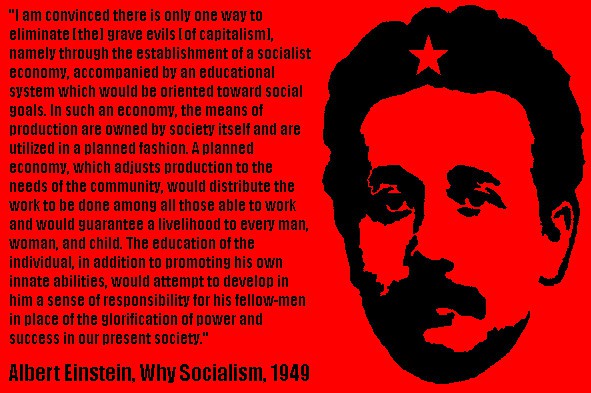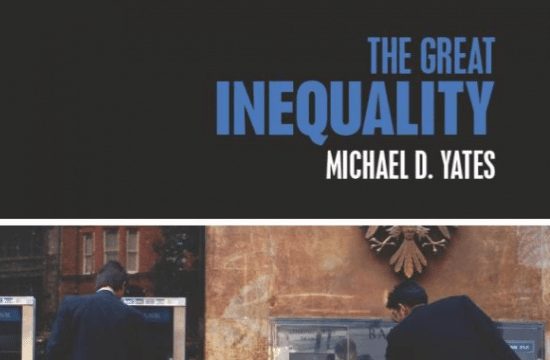Moshe Adler, Economics for the Rest of Us: Debunking the Science that Makes Life Dismal (New York: The New Press, 2009), 224 pages, $24.95, hardcover; David Orrell, Economyths: Ten Ways That Economics Get It Wrong (Mississauga, Ontario: John Wiley & Sons Canada, Ltd., 2010), 288 pages, $27.95, hardcover, $12.99, paperback (published London: Icon Books, 2010); Yanis Varoufakis, Joseph Halevi, and Nicholas J. Theocaratis, Modern Political Economics: Making Sense of the Post-2008 World (New York: Routledge, 2011, forthcoming), 536 pages, $165.00, hardcover, $65.00, paperback.***
Science is often thought to proceed from a theory to experiments that test its predictions. If new data are discovered that cannot be explained by the theory, eventually a new theory arises to replace it. If the new theory can explain everything the old one did plus the new phenomena, sooner or later every scientist will adhere to the new paradigm.
Neoclassical economics is taught at every college classroom in the United States and in almost every country in the world. Graduate students learn no other approach to economics. They are taught that neoclassical economics is a science, on a par with physics and the other natural sciences. There is even a joke that when good neoclassical economists die, they are reincarnated as physicists, but bad ones come back as sociologists. Economists take great pride in the fact that there is an award termed a “Nobel” in their discipline (It is called the Bank of Sweden Prize in Economic Science in Memory of Alfred Nobel”). This proves to them that economics is as applicable to society as physics is to the universe. There are, after all, immutable laws in both. The laws of demand and supply are no different, in principle, than the law of gravity. David Orrell, in Economyths, quotes Lawrence Summers as saying, “Spread the truth—the laws of economics are like the laws of engineering. One set of laws works everywhere.”
But the authors of the three books under review deny categorically that neoclassical economics is a science. Economists have taken certain scientific concepts—such as equilibrium, stability, efficiency, feedback loops—and certain mathematical and statistical techniques and notions—such as calculus, probability, normal distribution, randomness, independence—and applied them to society in ways both inappropriate and simple-minded. Each of these writers concludes that, while economics has scientific pretensions, it is primarily an ideology that supports the interests of the rich and powerful, and in the process, confers prestige, influence, and money on its practitioners.
Modern Political Economics gives us the most sophisticated account of the surreal character of neoclassical economics. This book is not for beginners; a prior understanding of economics is required to get through it. And patience, as it is more than five hundred pages long. However, its deconstruction and demolition of neoclassical economics is devastating. Yanis Varoufakis, Joseph Halevi, and Nicholas J. Theocaratis show us in superb detail how economists have constructed a model of the capitalist economy that assumes it is exactly analogous to a flawlessly operating machine system (They use the movie The Matrix to good effect as an example).
Neoclassical economists assume that society is made up of independent, self-interested, and all-knowing human beings, who come together in marketplaces over which they exert no control, and all at once arrive at agreements in such a way that every market clears. That is, a price is established at which the supply of every single commodity equals the demand for it. Furthermore, the general equilibrium achieved is one of maximum social efficiency. It is what economists call “Pareto efficient,” after the Italian economist Vilfredo Pareto; it describes an equilibrium such that no change away from it can make at least one person better off without making anyone else worse off.
Such an economy bears no resemblance to any actual existing economy, nor could it. There is no money in it, no government, no notion that there is a natural world in which production occurs, no workplaces. It is constructed in abstraction from the distribution of wealth and income. It is like a Georgio de Chirico painting, timeless and idealized. Yet, in an act of stunning legerdemain, neoclassical economists employ this imaginary model as if it were the ideal system of production and distribution, the only one that can be used to judge how well any contemporary capitalist economy is performing.
Since the notion of social efficiency has been defined prior to its building, and the equilibrium set of prices satisfies this definition, it follows that any deviation from equilibrium will be inefficient. Economists use this model to argue the undesirable consequences of minimum wage laws, labor unions, price controls, rent controls, income taxes, environmental regulations—indeed just about anything a government does. Because government actions will almost surely harm at least one person, they, by definition, must be ruled out. In addition, all attempts by governments to counteract unemployment (which can only be caused by some external and temporary shock to the economy, such as a drought or a flood) will be self-defeating, since the all-knowing buyers and sellers will immediately act to nullify the desired results of the government policymakers. Economist Robert Pollin put it well in a stinging critique of neoclassical luminary, Robert Lucas:
To begin with, Lucas assumed that people carried in their heads a fully worked out and accurate model of how the macro economy functions. In the event that the Federal Reserve tried to stimulate the economy and expand job opportunities by lowering interest rates, all rational people, working with the accurate macroeconomic models in their heads, would know that this initiative would end up causing inflation. More precisely, they would calculate how much inflation would be produced by the Feds intervention, and as such, they would also know that this acceleration of the inflation rate would erode how much they could buy at the given wage they were being paid. The workers would therefore realize that they would be foolish to deliver the same level of work effort until their wages were raised to compensate them for the rise in inflation. The unemployed would similarly refuse job offers whose wages did not account for the erosion of their buying power that would result through the inflation that they would have accurately anticipated.
There is much more to Modern Political Economics than a skewering of neoclassical economics. It is, in fact, an exceptional history of economic thought. The authors explicate the economic ideas of every major thinker: Aristotle, the Physiocrats, Adam Smith, David Ricardo, Karl Marx, Leon Walras, Alfred Marshall, Kenneth Arrow, Gerard Debreu, Paul Samuelson, John Nash, John von Neuman, John Maynard Keynes, Milton Friedman, Friedrich Hayek, Michal Kalecki, Paul Sweezy, Robert Lucas, Eugene Fama, and several more. Their intellectual history is the prelude to an examination of the Great Recession triggered by the bursting of the housing bubble. The authors argue that the failure of mainstream economists either to see that an economic collapse was coming or to know what to do about it was due in large part to what they call “lost truths” and “inherent errors.”
For example, Ricardo’s model of the capitalist economy has considerable logical purity. But following his attempt to show, within one grand framework, both how the economy grows over time and what determines the ratio of one price to every other price (something the authors say is impossible and represents the “inherent error” of all general economic theories), Ricardo concluded that there could not be an economic crisis caused by insufficient aggregate demand for goods and services. He ignored the challenge to this position made by Sismondi and Malthus, and Ricardo’s superior intellect, wealth, and prestige helped to allow an important “truth” to be lost for over a century later, until John Maynard Keynes resurrected it during the Great Depression.
Both Economics for the Rest of Us and Economyths skewer the glaring deficiencies of neoclassical economics in a less formal manner. The former book is full of interesting insights and would make an excellent textbook. It is divided into two, interrelated, parts. Part One challenges the use of Pareto optimality. Professor Adler resurrects Utilitarianism, an older measuring rod first developed by Jeremy Bentham, which says that a society should always do those things that give rise to the greatest happiness (utility) for the most people. Bentham assumed, as most of us would, that an extra dollar yields a lower utility to the rich than to the poor. Maximum social utility is therefore highest when everyone has the same income. This is a radical idea indeed, and this is why Pareto attacked it so harshly. With Pareto’s approach, we have no way to judge any public policy, since some will inevitably be hurt by it, while others will gain. Only when some win and not one person loses does Pareto give the go-ahead. And Pareto said that since it is impossible to measure utility, we cannot know for sure that an additional dollar will give less pleasure to the rich than to the poor person. Thus, there is no justification for government redistribution schemes.
But, with Bentham, we act whenever the gains to the winners are greater than the losses to the losers. Combined with the argument that the utility of additional money falls, the more money a person has, Utilitarianism gives us ample justification for many public policies. Adler provides numerous clear and enlightening examples of eminently good public programs that have been routinely condemned by neoclassical economists. These include price controls for necessary medicines, subsidies to those with low incomes, Medicare, rent controls, progressive taxation, and anti-pollution laws—against which Lawrence Summers infamously wrote that it is socially desirable for rich nations to dump their toxic wastes in poor countries since people there do not live long, and consequently, their lives are worth less than ours in rich nations .[Adler’s discussion of Pareto and Bentham includes many subtleties not discussed here due to space limitations. However, these are well worth examining.]
Economics for the Rest of Us also describes some seldom discussed consequences of growing income inequality. Adler first points out one of the major features of modern capitalist economies, namely, the pervasiveness of monopoly or, to be more precise, oligopoly—market structures in which one or a few large business firms dominate production. Monopoly confers pricing power on the monopolist, which leads to higher prices and smaller output than when markets are more competitive. Next, Adler shows how growing inequality interacts with monopoly power to deny access to goods and services to those in the middle and at the bottom of the income distribution. He illustrates with clever examples, describing how it is more profitable for a monopolist to cater to the rich, exclusively. Some physicians now refuse to accept health insurance, including Medicare, and instead charge rich clients a yearly fee, which gives them fast access to treatment (for which they pay in cash). Airlines increase the size of expensive first-class compartments, even making seats that convert into beds, while the remaining passengers are squeezed into smaller and smaller spaces. Rock stars find it more profitable to perform at private parties for wealthy patrons than for the masses at stadiums with reasonably priced seats. In New York City, where income inequality is off the charts, real estate developers have increased the size of upscale apartments, while studios and one-bedrooms continue to shrink. Rents and prices have risen most for the largest apartments, which has reduces the number of apartments available. As Adler puts it:
My own calculations show that if Manhattan apartments were limited in size to 1,200 square feet, then, without constructing even one new building, the supply of apartments for ownership would increase by 35 percent and the supply of apartments for rent would increase by 20 percent.
The remarkable thing is that, from the neoclassical point of view, the economic pie gets bigger even as inequality worsens. If a few rich patients pay more for a doctor’s services then, other things being equal, the GDP is higher than it would have been if the doctor had welcomed all patients.
Despite Adler’s powerful arguments in favor of greater equality (his section on education, where inequality is as dire as it is ignored by education reformers, is a must-read), his neoclassical brethren say that inequality is a good thing. What else would keep everyone working so hard? And, as Adler tells us in the second half of his book, inequality is but a reflection of unequal productiveness. Hedge fund managers deserve to make a billion dollars a year and CEOs deserve to be paid hundreds of times more than their rank-and-file employees because they are fantastically more “productive.” This doctrine was systematically developed in the late nineteenth century by the neoclassical economist John Bates Clark. It is worth reproducing a Bates quotation from Adler’s book, as it shows the anti-radical motivation for much of neoclassical economics:
The welfare of the laboring classes depends on whether they get much or little; but their attitude toward other classes—and, therefore, the stability of the social state—depends chiefly on the question, whether the amount that they get, be it large or small, is what they produce. If they create a small amount of wealth and get the whole of it, they may not seek to revolutionize society; but if it were to appear that they produce an ample amount and get only a part of it, many of them would become revolutionists, and all would have the right to do so. The indictment that hangs over society is that of “exploiting labor.” “Workmen” it is said, “are regularly robbed of what they produce. This is done within the forms of law, and by the natural working of competition.” If this charge were proved, every right-minded man should become a socialist; and his zeal in transforming the industrial system would then measure and express his sense of justice. If we are to test the charge, however, we must enter the realm of production. We must resolve the product of social industry into its component elements, in order to see whether the natural effect of competition is or is not to give to each producer the amount of wealth that he specifically brings into existence.
The gist of Clark’s formulation, which is a gross misapplication of Ricardo’s theory of ground rent, is that workers are paid a wage equal to what they add to their employer’s revenue. This wage will be higher, the more productive they are. Clark and his neoclassical progeny assume that workers can be added, one at a time, to the employer’s land, materials, and machinery, and that we can then measure the amount by which production rises. This amount, valued at the market price, is presumed to measure the typical worker’s productivity. Competitive conditions in labor markets will ensure that the wage rate exactly equals this “marginal revenue product.” A janitor in Trump Towers adds little to Trump’s revenue, but Trump, himself, adds millions. So he is rich, and the custodian is poor. Adler dismantles this theory by pointing out that there are no plausible real-world examples of it. Modern production is carried out by groups of workers, and if an employer uses more labor, it has to use more capital as well. In either case, it is impossible to separate the productiveness of one worker from the others, or of labor from capital. I have taught working people for thirty years, and I have never found one who did not think that Bates’s theory was crackbrained. Yet try to find a textbook that does not repeat it as if it were the gospel truth.
Certain grim predictions flow from Clark’s model: rasing the minimum wage will cause an increase in unemployment; union wages will do the same. And mass unemployment (as in the Great Depression) is the consequence of the failure of wage rates to fall enough to induce employers to hire more people. Adler shows readers that there is not a shred of evidence for these predictions.
The most outrageous neoclassical proposition is that the Great Depression can be explained by so-called “sticky” wages. Both free market extremists, such as Milton Friedman, and liberal moderates, such as Joseph Stiglitz, blame workers for mass unemployment. Friedman claimed that workers are unemployed because they will not accept lower wages when the demand for their labor falls. Erroneously believing that the demand for output has only fallen in their industries, workers quit their jobs rather than take lower pay, apparently too dumb to see that there is a general economic downturn. In point of fact, wages do fall in depressions, and workers are often willing to take whatever work they can find at whatever wage they can get. Keynes showed us that falling wages and prices can lead to uncertainty about the future, and this is what might keep unemployment high.
Stiglitz’s explanation is just as foolish as is Friedman’s. He argued that employees are always trying to “shirk,” that is, work as little as possible. To prevent this, employers must pay a higher wage than is consistent with full employment. The resulting unemployment is just what is needed to keep those employed hard at work; they don’t want to lose their shirking premium. Again, little evidence is presented to support this idea. Stiglitz seems unaware of the compelling evidence offered by Harry Braverman and many others that modern workplaces have been so thoroughly Taylorized (designed and monitored to maximize employer control, per the dictates of Frederick Taylor), that shirking is nearly impossible.
Both Modern Political Economy and Economics for the Rest of Us conclude that neoclassical economics almost always shows a preference for institutional arrangements and public actions that benefit those who are wealthy and powerful. It is, to put it bluntly, an ideology that helps keep us ignorant of the exploitative class relationships that define capitalism. The author of Economyths would not disagree, although his critique of neoclassical economics is more eclectic. David Orrell is an applied mathematician without formal training in economics. This bothered one reviewer on amazon.com, but it should not have. An outsider can often give us deeper and more objective insights than an insider. We should not forget that Smith and Marx were trained in philosophy, Ricardo was a stockbroker, and von Neumann a mathematician. We should be thankful that they did not have to endure the horrors of a graduate education in economics as did this reviewer.
Orrell begins his lively book with a question both obvious and unanswered by mainstream economics. Why did economists not see that the economy was about to implode in 2007? He answers that the fault is in the fundamental assumptions they made. Orrell points to Eugene Fama and his “efficient market theory,” through whose lens, financial markets—and all markets, for that matter—were seen by the most sophisticated neoclassicals. The price of an asset, say a credit default swap, reflects all past, present, and future events that might influence it. That is, it is always “right.” The only deviations from the market price are the result of random, small shocks. Since they are random, they are predictable using the laws of probability and the normal distribution. What this means is that there could have been no housing bubble, no bursting of the bubble, and no Great Recession. A little more than a year ago, Fama told John Cassidy, “I don’t even know what a bubble means.” Indeed! They are ruled out by assumption, the entire chaotic history of capitalism notwithstanding. Fama blamed the government for the crisis, but if markets know all, shouldn’t they have anticipated what the government was going to do and responded in such a way as to mitigate the bad that would happen?
Orrell defines ten “economyths” and devotes a chapter to each one: (1) the economy can be described by economic laws; (2) the economy is made up of independent individuals; (3) the economy is stable; (4) economic risk can be easily managed using statistics; (5) the economy is rational and efficient; (6) the economy is gender-neutral; (7) the economy is fair; (8) economic growth can continue forever; (9) economic growth will make us happy; and (10) economic growth is always good. He explains the historical origin of each myth, often using an amusing story to make his point. He traces Summers’s “one set of laws works everywhere” to Pythagoras’ fascination with the regularity of numbers. Isaac Newton and his physics attracted the original neoclassical economists—William Stanley Jevons, Pareto, and Leon Walras are the ones Orrell discusses, giving a sympathetic account of each. The beautiful symmetry of supply and demand equilibrium derives directly from nineteenth-century physics. Unfortunately, human societies cannot be analyzed using the concepts of physics. They are too messy and complex; power of all kinds is critical to them but has nothing to do with the subject matter of the sciences; and, while the universe is indifferent to happiness, human beings are not.
Let me end this review with some mild critical comments. None of these books tells us how to break the vice-like grip of neoclassical economics on both the profession and on most of the institutions of capitalist society. If almost all of it is grossly apologetic for the human misery and environmental degradation that form the body and soul of capitalism, how does it tick on, like the Energizer Bunny, back today despite the Great Recession that seemed to offer some hope that we would reject it once and for all? When the world’s financial markets were on the verge of a catastrophic breakdown, Alan Greenspan, the “maestro” of the markets, offered mea culpas at a Congressional hearing for adhering to an incorrect theory. Now he has recanted his apostasy. Everything was really all right, just as he had said before the bubble burst.
Modern Political Economics sings the praises of Karl Marx for uncovering the source of profits in the exploitation of wage labor. Marx showed that human labor is not reducible to an ordinary commodity; workers rebel against their exploitation. However, the authors fail to develop this idea (and neither Adler nor Orrell talk about worker organizing at all). Instead, they devote too many words about how Marx succumbed to the “inherent error,” of using the labor theory of value to explain relative prices, giving rise to the infamous “transformation problem.” They imply that Marx’s failure here is one reason why his truths about profits and labor have been lost. This is much too simple. Marx’s truths have been lost because the class struggle waged by the working class has not succeeding in effectively challenging the rule of capital. Neoclassical economics is the economics of capital, as Marx’s political economy is that of the working class. As long as capital rules without a radical presence fighting against it, neoclassical economics will rule as well. No such presence exists today in any rich capitalist country, or, with a handful of exceptions, in any poor nation, either.
All three of these books are useful. Orrell makes sound recommendations that economics utilize methods of analysis and techniques that have proven their worth in other fields of study. His ten economic myths should be committed to memory. Professor Adler has done a marvelous job of showing us, especially students, that neoclassical economics is strong on assertions but weak on supporting evidence. Varoufakis, Halevi, and Theocaratis have blown neoclassical economics to bits. However, stating the obvious stupidities and shortcomings of neoclassical economics will do nothing to weaken its hold. Unless, that is, a significant number of students and economists ally themselves with working men and women: teaching them, writing for and with them, becoming one of them in their own workplaces.
***This review appeared in the June 2011 issue of Monthly Review.









I really enjoyed that review, thanks.
And thank you, Seth.
Terrific Review!
Is the price of Varoufakis’ book one way Capitalists keep workers uninformed?
Is that price correct–$165?
🙁
Mich, thanks for the kind words. Even the paperback will be expensive. I broke my rule of
refusing to review such expensive books because the authors are friends of Monthly Review and
because it would have been difficult for any but a trade text publisher to publish such a long book
on such a subject.
great job reviewing the books. all my respect!
There are some schools that teach “real economics,” or something close to it. NSSR, Amherst, etc.
“Amherst” teaches real economics? Where is costs at least $50,000 a year to get a credential to be a future hedge-fund criminal?
Perhaps you mean UMass-Amherst, the public university, with a rising tuition, crumbling infrastructure, etc.
The only way to teach “real economics” is to drop out of the higher ed rat race.
Mike, what interests me is how much of the critique of mainstream neoclassicism would have been heartily seconded (indeed, perhaps was “firsted”) by Austrian school economists like Mises and Hayek. The aping of physics, the mathematical fetish, the preoccupation with equilibrium and perfect knowledge are all rejected by Austrians, although policy-wise they tend to be libertarian free-marketeers.
Question: What’s your view (or what would be the authors’ view) of the Federal Reserve? Its existence and operations are endorsed by the neoclassical mainstream, yet it clearly rests on the belief that wise bureaucrats can manage the economy — which, you say, neoclassicals deny is possible (if I’m reading you correctly). To Austrians the Fed is a major source of instability. How do you see it? Is it relatively good, bad, or maybe just incidental to the main game?
I’ve been thinking of Marriner Eccles statement that the economy is like a poker game, and when the losers run out of credit the game is over. I wrote someone, “Game over, Go Home, Rot in Hell”. He was talking about the inequality that pushed the nation into the Great Depression. Poker is pure accumulation, Life on the other hand is relationship, trust, cooperation, social skills, intelligent behavior, and life breaks the rules of accumulation with revolutions, strikes, politics, etc. Economics misses this fundamental mis-match with life. Thanks for an interesting review. My local library has Adler’s book, would like it to get the Economyths one.
Alan,
Keynesian neoclassicals like Samuelson and Krugman believe that the economy can be managed through state action. Chicago school neoclassicals like Phelps, Fama, etc do not believe this. For me the Keynesians miss the nature of the state. You and I probably disagree about this, in that I see the state as a place where class struggle occurs, but where the big capitalists dominate unless there are strong worker movements. I disagree with the Chicago neoclassicals and the Austrians that the economy can self regulate. But I don’t think the state can overcome the crisis prone nature of a capitalist economy either. This is why I can’t stand liberals!!!
Varoufakis et al have very positive things to say about the Austrians even though they are left wingers. They agree with what you say about them. But they don’t see capitalist economies as self regulating or basically benign if left to self regulate.
The authors don’t say much about the Fed. It certainly is delusional to believe that the Fed can successfully regulate the economy or to believe that it is not a source of instability. Greenspan engineered the housing bubble to make up for the collapse of the dot.com bubble! But I see it as an entity that helps to keep the people thinking that there is some mysterious thing called the economy that only experts like those at the Fed can grasp and regulate. The neutrality of the Fed politically is a big myth that allows Goldman Sachs and company to steal without penalty. Behind the scenes the Fed is not independent of these folks. The Fed is not incidental to the main game, that is for sure.
If you want me to send you what Varoufakis et all say about the Austrians, let me know by facebook email.
Hi Michael,
Perhaps you might permit Links International Journal of Socialist Renewal (http://links.org.au) to post this excellent review? We’ll credit the author and link to the original, and add any further attribution you may require. Please email me at glparramatta@greenleft.org.au if this is ok.
All the best,
Terry
Mike,
According to the Wikipedia article on him, John Bates Clark had been a Christian socialist up to 1886, then he suddenly shifted to a free market capitalist position. Of course that was the year of the Haymarket Riot, which apparently put the fear of God, or least of the working class, into him.
http://en.wikipedia.org/wiki/John_Bates_Clark
I have looked at the Moshe Adler book and I agree that it is interesting. As Adler correctly points out many of the classical utilitarians argued for economic equality,using he principle of diminishing utility to argued that a redistribution of income from the more affluent to the less affluent will increase total utility. And he points out that Pareto introduced his own notions concerning allocational efficiency to displace the utilitarianism that had been embraced by many of the classical economists. I also read Adler’s discussion of wage theories – classical wage theories like Ricardo’s versus neoclassical wage theories like that of John Bates Clark, then I was reminded that three years ago on the Marxism List, we had discussed an article that Moshe Adler had written opposing Raul Castro’s proposed economic reforms in Cuba. As I think I made clear here (http://archives.econ.utah.edu/archives/marxism/2008w24/msg00358.html), I was not fully convinced by Adler’s argument, although it is interesting to note that in that article, he made much of Ricardo’s theory of wages too.